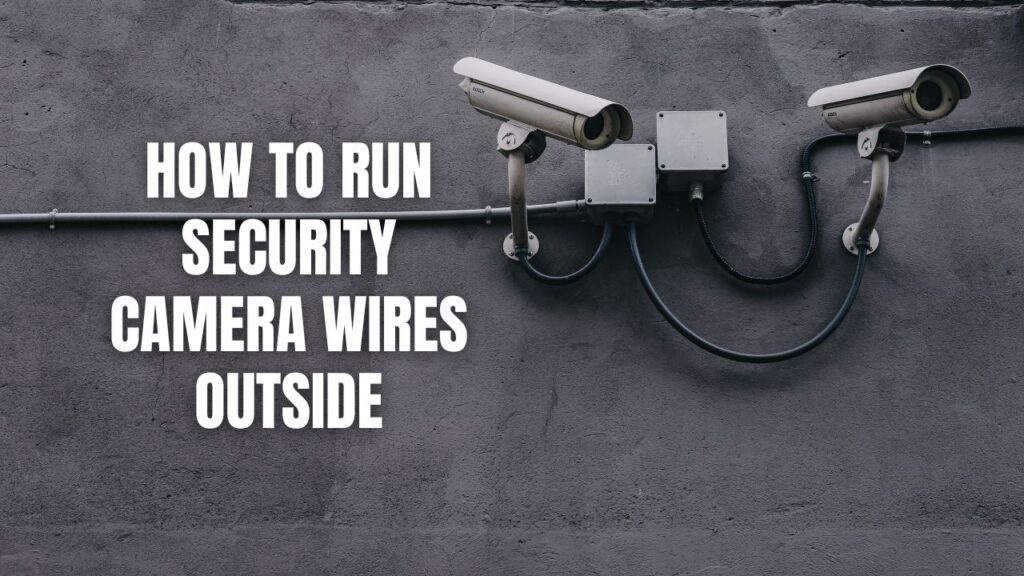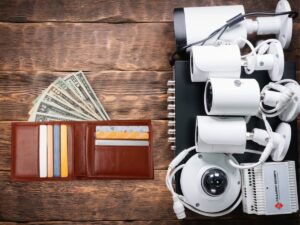Running security camera wires outside requires careful planning to ensure durability, security, and weather resistance. The process involves selecting weatherproof cables, using conduits for protection, drilling strategic holes, securing cables properly, and sealing all entry points to prevent moisture and tampering.
When setting up an outdoor security camera system, properly routing and securing the wires is crucial. Whether using Power over Ethernet (PoE) or traditional power cables, ensuring the longevity and safety of the wiring helps maintain a reliable surveillance system. With the right approach, we can avoid signal loss, physical damage, and unauthorized tampering.
Key Takeaways:
- Choose Weatherproof Cables: Outdoor-rated cables withstand harsh weather conditions.
- Use Protective Conduits: PVC or metal conduits shield cables from external damage.
- Plan the Shortest Route: Minimizes installation complexity and cable costs.
- Drill Strategic Holes: Ensures easy routing while keeping structural integrity intact.
- Secure Wires Properly: Use clamps, guards, and concealment techniques for safety.
- Seal All Openings: Prevents moisture, pests, and intrusions into buildings.
- Label Wires: Simplifies maintenance and troubleshooting.

Choosing the Right Cables and Tools
Weatherproof Cables
- Cat 5/6 Ethernet: Ideal for PoE security cameras.
- Siamese Cable: Carries both video and power for analog systems.
- Outdoor-Rated Power Cables: Required for non-PoE cameras.
Necessary Tools
- Drill with Hole Saw Bit: For creating entry points through walls.
- Fish Tape: Helps guide wires through conduits.
- PVC or Metal Conduits: Provides protection against weather and vandalism.
- Silicone Sealant or Duct Seal: Prevents moisture entry at drilled points.
Step-by-Step Guide to Running Security Camera Wires Outside
1. Plan the Cable Route
- Identify the shortest and safest path from the camera to the recording device or power source.
- Avoid areas prone to damage, such as walkways, gardens, and heavy traffic zones.
- Consider future maintenance by keeping routes accessible.
2. Drill Holes Strategically
- Drill from the outside towards the inside for better control.
- Use a right-angle drill for tight spaces.
- Choose appropriate drill bit sizes to prevent excess gaps around the cable.
3. Use Protective Conduits
- PVC Conduits: Affordable and resistant to corrosion.
- Metal Conduits: Offers extra security against tampering.
- Burying Depths:
- PVC: At least 18 inches deep.
- Metal: At least 6 inches deep.
4. Run and Secure the Wires
- Attach cables to fish tape and pull them through the conduit.
- Use drip loops at cable entry points to prevent water from seeping in.
- Secure wires with clamps or guards along walls and fences.
5. Seal All Entry Points
- Apply silicone sealant or duct seal around drilled holes.
- Prevent moisture buildup and pest infiltration.
6. Conceal and Hide Cables
- Bury cables underground for extra protection.
- Use wire guards or raceways to keep wires out of sight.
Additional Tips for Running Outdoor Security Camera Wires
- Use UV-Resistant Cable Jackets: Prevents deterioration from sun exposure.
- Test Camera Connection Before Finalizing Installation: Ensures proper functionality.
- Check Local Building Codes: Compliance with electrical and safety standards.
Frequently Asked Questions (FAQs)
Can I run security camera wires without conduits?
Yes, but it’s not recommended. Exposed wires are vulnerable to weather and tampering. Using conduits extends their lifespan and enhances security.
How deep should I bury outdoor security camera cables?
For PVC conduits, bury them at least 18 inches deep. For metal conduits, 6 inches is sufficient.
Can I use Wi-Fi instead of running wires?
Wireless cameras work well in certain situations but can be affected by interference, signal range, and power source limitations. Hardwired cameras are more reliable.
What’s the best way to secure wires along walls?
Use wire clips, raceways, or conduits to keep cables organized and protected.
Wrapping Up: Secure and Reliable Wiring for Outdoor Cameras
Properly running security camera wires outside ensures a stable, long-lasting surveillance system. By using weatherproof cables, protective conduits, and strategic routing, we can enhance both security and aesthetics. Investing time in careful installation prevents future issues and keeps our security system running smoothly.
Contact Callaway Security™ if you are seeking for professional installation of your security cameras outside!











